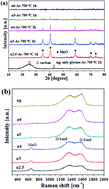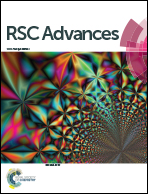MnO nanocrystals incorporated in a N-containing carbon matrix for Li ion battery anodes†
Abstract
In this study, MnO nanocrystals incorporated in a N-containing carbon matrix were fabricated by the facile thermal decomposition of manganese nitrate-glycine gels. MnO/C composites with different carbon contents were prepared by controlling the initial ratio of manganese to glycine. The composition, phase structure and morphology of the composites were characterized by X-ray diffraction, X-ray photoelectron spectroscopy, Raman spectroscopy, scanning and transmission electron microscopy, and thermogravimetric analysis. The results indicated that MnO nanocrystals were uniformly embedded in the N-doped carbon matrix. The carbon matrix could effectively enhance the electrical conductivity of MnO and alleviate the strain arising from the discharge/charge cycling. The composite materials exhibited high discharge/charge capacities, superior cycling performance, and excellent rate capability. A high reversible capacity of 556 mA h g−1 was obtained after 110 cycles of discharging and charging at a current rate of 0.5 A g−1. Even at a high current rate of 3 A g−1, the sample still delivered a capacity of around 286 mA h g−1. The easy production and superior electrochemical properties enables the composites to be a promising candidate as an anode alternative for high-performance lithium-ion batteries.


 Please wait while we load your content...
Please wait while we load your content...